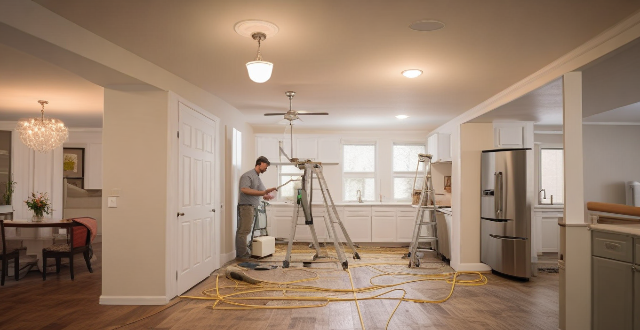This guide provides a comprehensive step-by-step process for installing a burglar alarm system at home, covering aspects like system selection, layout planning, tools and materials gathering, control panel installation, sensor placement, device connection, testing the system, programming settings, and maintenance tips. It emphasizes the importance of choosing the right system based on type, features, reputation, and cost. The guide also highlights the significance of proper sensor placement, power source planning, and using appropriate tools and materials. It details the procedure to install the control panel, sensors, cameras, and glassbreak detectors, followed by connecting devices either wirelessly or through hardwiring. Testing the system, setting up user codes, and customizing settings are crucial steps before regular maintenance and troubleshooting ensure the system's longevity and effectiveness.

How to Install a Burglar Alarm System at Home
Introduction
A burglar alarm system is an essential security measure for any home. It can deter potential intruders, alert you of any unauthorized access, and provide peace of mind. In this guide, we will discuss the steps involved in installing a burglar alarm system in your home.
Step 1: Choose the Right System
Considerations:
- Type of System: Wireless or Hardwired
- Features: Motion sensors, door/window contacts, cameras, etc.
- Brand Reputation: Research and read reviews
- Cost: Budget-friendly options vs. high-end systems
Step 2: Plan the Layout
Tips:
- Identify Key Areas: Entrances, windows, valuables storage, etc.
- Determine Sensor Placement: Avoid blocking sensors with furniture or decorations
- Plan Power Sources: Consider battery-powered devices or proximity to electrical outlets
Step 3: Gather Tools and Materials
Checklist:
- Drill
- Screwdriver set
- Level
- Measuring tape
- Wires and cables (if needed)
- Mounting hardware (screws, anchors, etc.)
Step 4: Install the Control Panel
Procedure:
1. Choose a Central Location: Easily accessible but out of direct view
2. Mount the Control Panel: Use screws and anchors to secure it to the wall
3. Connect Power Source: Plug into an electrical outlet or connect to your home's electrical system (requires professional assistance)
Step 5: Install Sensors and Devices
Instructions:
1. Motion Sensors: Place in areas with high traffic, avoiding direct sunlight or heat sources
2. Door/Window Contacts: Install on all accessible entry points, ensuring proper alignment
3. Cameras: Position to cover key areas, considering wiring and power needs
4. Glassbreak Detectors: Near vulnerable windows, away from air vents or appliances that produce noise
Step 6: Connect Devices to the Control Panel
Techniques:
- Wireless Systems: Follow the manufacturer's instructions to sync devices using the control panel
- Hardwired Systems: Run wires from each device back to the control panel, ensuring proper connections and hiding wires for aesthetic purposes
Step 7: Test the System
Best Practices:
- Activate the System: Turn on the power source and activate the alarm system
- Test Each Sensor: Ensure they are functioning correctly by triggering them one by one
- Verify Communication: If your system has monitoring services, test the connection to the monitoring center
Step 8: Program the System and Set Up User Codes
Guidelines:
- Customize Settings: Adjust sensitivity levels, arming schedules, and notifications based on your preferences
- Assign User Codes: For family members or trusted individuals who need access without triggering the alarm
Step 9: Maintenance and Troubleshooting
Tips:
- Regularly Check Batteries: Replace as needed to prevent system failures
- Update Software: If applicable, ensure your system's software remains up-to-date for optimal performance
- Consult Manual: If issues arise, refer to the user manual or contact customer support for assistance
Conclusion
By following these steps, you can successfully install a burglar alarm system in your home. Remember to consult with professionals if you encounter any complex tasks or require additional assistance. Stay vigilant and maintain your system regularly to ensure its effectiveness in protecting your home and loved ones.